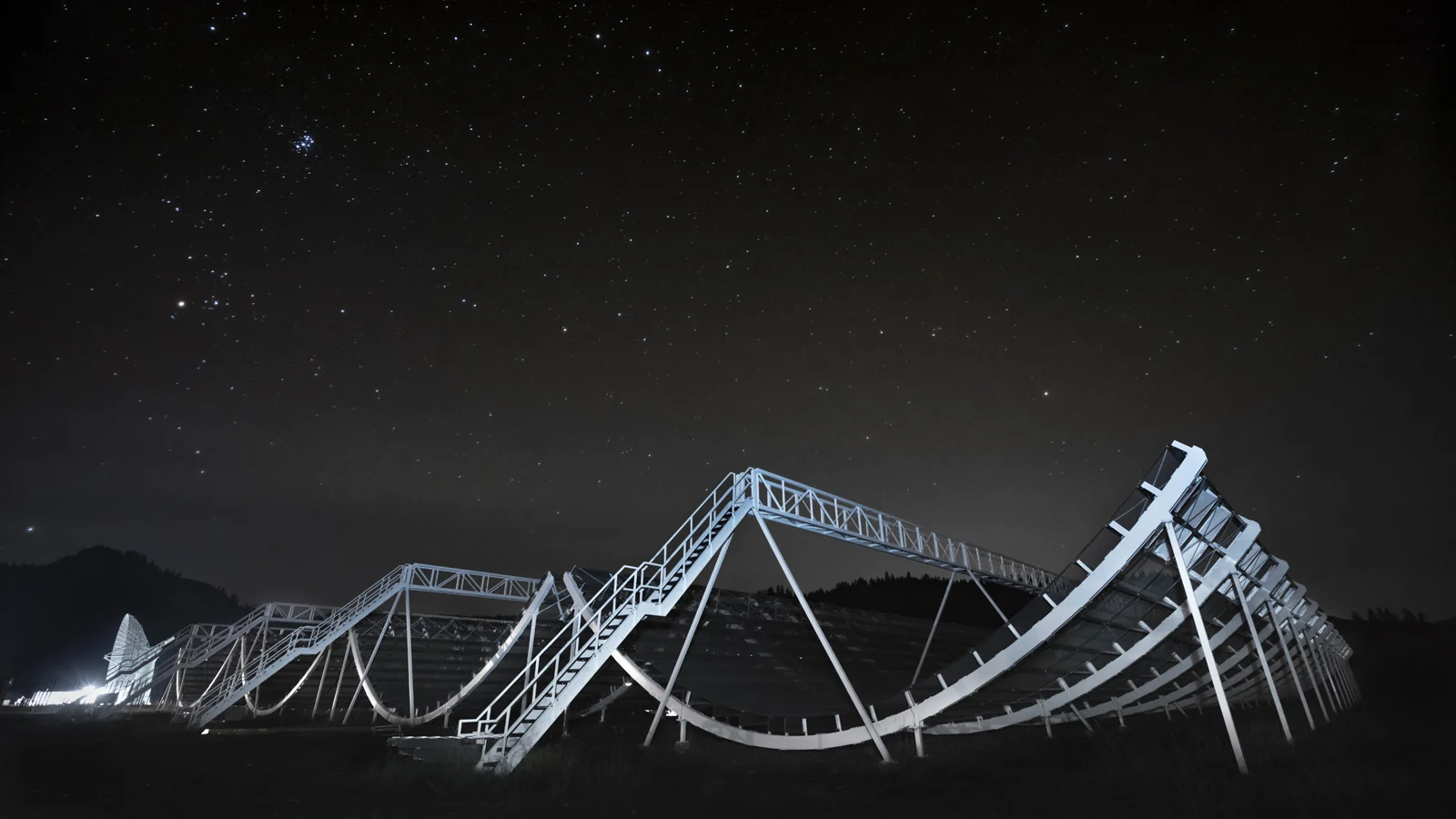
Canadian telescope spots bizarre 16-day pattern in signals from deep space
This may be the very first pattern ever seen from these mysterious radio signals
Astronomers using the Canadian Hydrogen Intensity Mapping Experiment (CHIME) have discovered a strange pattern to repeating signals from deep space.
Fast radio bursts (FRBs) are mysterious beams of radio waves, lasting for just a fraction of a second each. They randomly flash out of the depths of the universe, originating from galaxies far away. Although astronomers have some ideas about what could produce these bursts, they still do not know for sure what causes them.
While they are often lone events, some fast radio bursts are even known to repeat.
CHIME spotted one such repeating fast radio burst, named FRB 180916.J0158+65, coming from a source in a galaxy 500 million light-years away.

The CHIME radio telescope, located at the Dominion Radio Astrophysical Observatory (DRAO), south of Penticton, B.C. Credit: CHIME Telescope
Astronomers used CHIME to observe FRB 180916.J0158+65 for months, from September 2018 to October 2019. In a new study, they report that this FRB was not only repeating, but it is also the only FRB found so far that shows a definite 16-day pattern. It sends out bursts for four days, followed by a 12-day pause before the bursts start up again.
"We conclude that this is the first detected periodicity of any kind in an FRB source," the astronomers wrote in their study, currently on the pre-print arXiv server. While the research has not yet gone through the peer-review process, its findings are intriguing.
AN ANSWER TO THE MYSTERY?
Based on this unusual pattern, the research team has come up with a few possible ideas for what could be sending out these signals.
"The discovery of a 16.35-day periodicity in a repeating FRB source is an important clue to the nature of this object," they wrote.
When a massive star reaches the end of its 'lifespan', it often explodes into a supernova, leaving behind a compact remnant known as a neutron star. Depending on precisely what happens as the star blows up, some of these neutron stars can spin and emit powerful beams of energy from their poles. These are called pulsars, or magnetars in the case of one that ends up emitting powerful magnetic fields as well.
If one of these remnants was rotating in place, it could - for some reason - wobble like a spinning top. This would cause the beams of energy to sweep around, a bit like a lighthouse. Thus, we only see the signals when the beam sweeps past our location in its sky. The problem with this idea, the researchers note, is that the pattern they are seeing is far too long, since these objects spin at much faster rates. Another paper, submitted just this week, suggests that magnetars could precess with periods ranging from hours to weeks, and thus this could explain the pattern of FRB 180916.J0158+65.
As they wrote in the study, another possibility is one of these stellar remnants orbiting around another object. Thus, similar to the rotating object, the beam of energy would only be detected by us when it swept past our location. As the object orbited around another, though, it could explain the longer pause they see in the pattern.
It could be from what's known as a 'black widow' binary system. This is where a pulsar or magnetar orbits around a low-mass star, but it would have to be one with an unusually long orbit. It could also be one of these compact stellar remnants with a highly tilted orbit around a massive star or low-mass black hole. A black hole could also explain the pattern by its intense gravity bending or warping the energy beams from its companion.
Unfortunately, even though the possibilities are fascinating, this is all speculation for now. Until other telescopes can investigate this source, looking for x-rays or gamma-rays, the mystery will remain.
Sources: arXiv | CHIME Telescope
